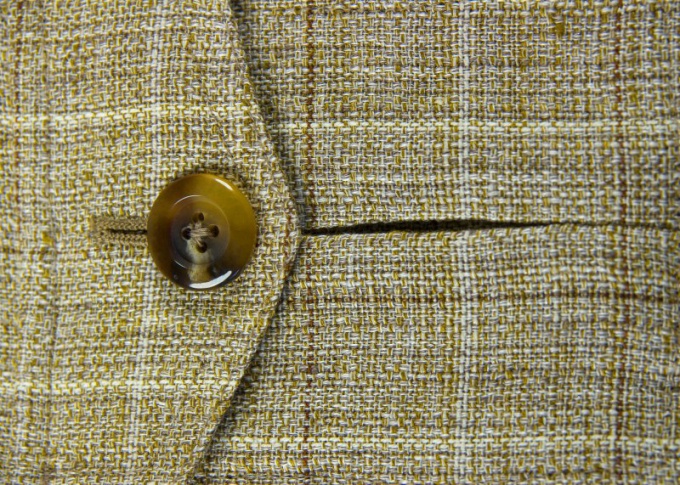Instruction
1
Before you make the loop, you must determine their location on clothing. The distance between the slits will depend on the type of fastener, diameter and number of buttons. There are subtleties that need to be done to our clothes looked nice and were comfortable to wear. The top loop should be within the diameter of the buttons from the edge of the product. The waist slot can not be done if clothing has a belt. But on the chest button loop should be a must if this involves style. The remaining slots are planned at an equal distance from each other.
2
Pay attention to the size of fittings you want to sew to the product. The length of the loop should be slightly larger than the diameter of the buttons (approximately 0.3 - 0.5 cm). Mark the line for the slots on the front side of the product. The loop can be horizontal, vertical, and placed on the bias.
3
If you decide to neaten the loop manually, first sew small stitches a rectangle around the intended line. Thread to match items by color. The distance from the line to stitches should be about 3 mm. Then put the future loop a piece of cardboard and make a cut. Panel edges received a long diagonal stitches, which should not go beyond the edges of the rectangle. Processing occurs "over the edge" around the incision. Bringing the needle and thread inside the hole of each stitch formed a loop, like fixing step. At the edges of the loops take a few wide stitches and tie a knot in the thread on the reverse side of the product.
4
If you process the loop on the sewing machine, the hole will be made only after all lines are done. First also set the line slots on the product. Select the machine mode of "zigzag". The stitch tool set with size "zero" in length, and its width to select, depending on the degree of fraying of the fabric. First sewn left side of the loop. Distance from the planned line to line should be approximately equal to the thickness of working thread. On the edge loop make five stitches. To do this, raise the needle and increase the width of the step machine to the maximum. Further similarly, the second sewn side of the loop and do at the end of a similar tack. If the fabric itself is coarse, then the hole process twice to strengthen the loop. Placing the material a piece of cardboard, carefully cut with sharp scissors, the fabric along pre-planned lines. You got a neat loop.
